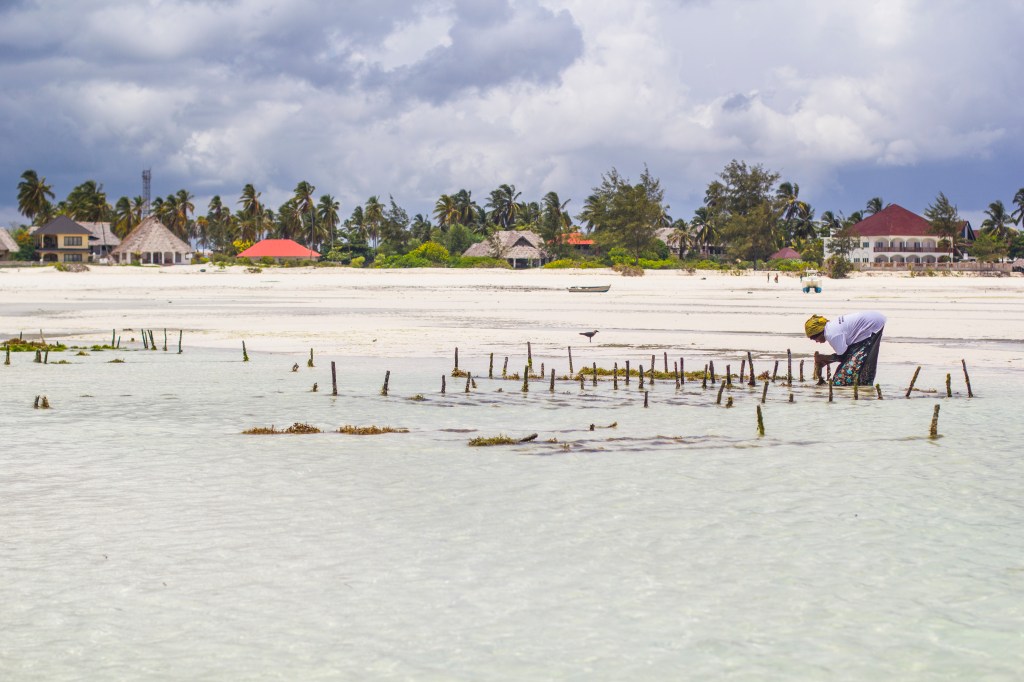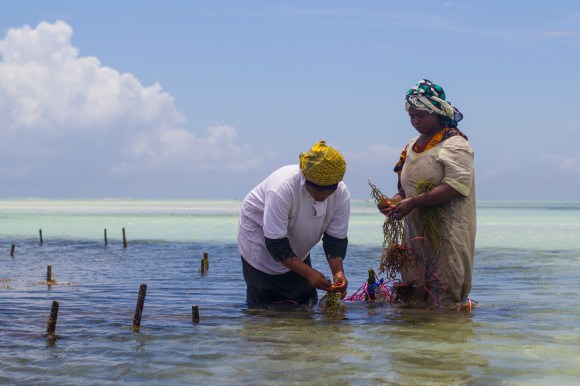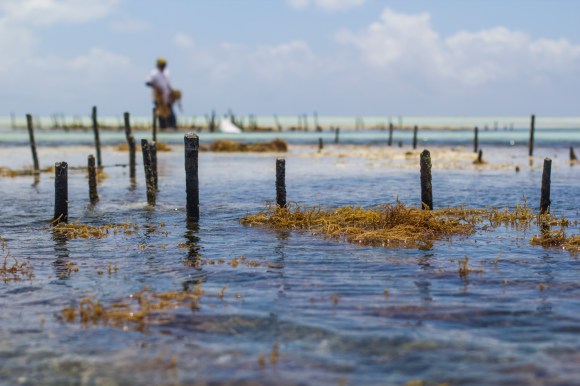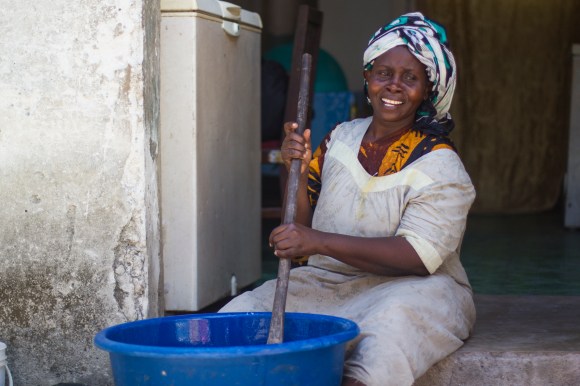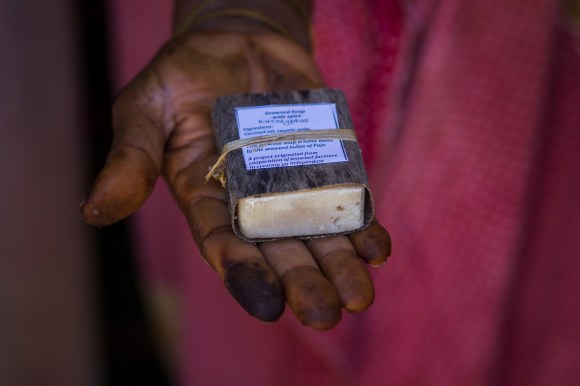Zanzibar’s seaweed growers face a changing climate. Here, a farmer tends to her farm in Paje, on the southeast coast of the island.
Mwanaisha Makame and Mashavu Rum, who have been farming seaweed on beautiful Zanzibar island for 20 years, wade through the low tide to their farm.
The seaweed grows underwater for 45 days. When it reaches one kilogram, the women pick it and dry it, then pack it in bags to be exported to countries like China, Korea and Vietnam. There, it’s used in medicines and shampoos.
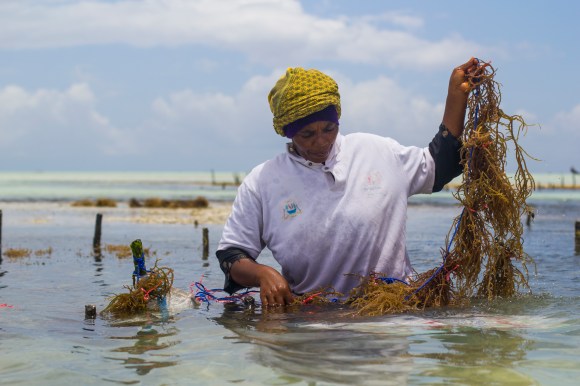 The farmers have a lot of problems due to climate change. Two decades ago, 450 seaweed farmers roamed Paje. Now, only about 150 farmers remain.
The farmers have a lot of problems due to climate change. Two decades ago, 450 seaweed farmers roamed Paje. Now, only about 150 farmers remain.
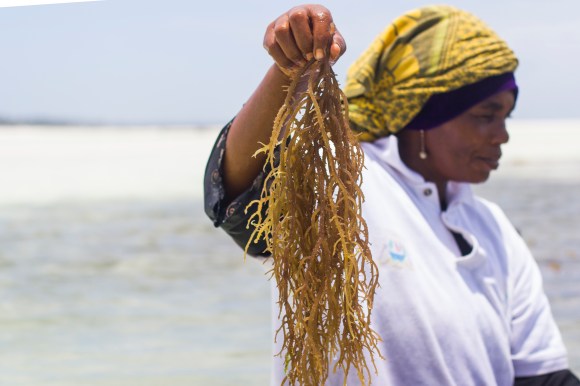 Mwanaisha holds up a healthy clump of seaweed. Then she holds up seaweed the farmers won’t be able to use. A hard white substance grows on it – ice-ice disease, caused by higher ocean temperatures and intense sunlight.
Mwanaisha holds up a healthy clump of seaweed. Then she holds up seaweed the farmers won’t be able to use. A hard white substance grows on it – ice-ice disease, caused by higher ocean temperatures and intense sunlight.
The seaweed farmers learned how to make soap from their seaweed at the Zanzibar Seaweed Center, a business that started as an NGO in 2009. At their homes, they mix water, ground seaweed powder, coconut oil, caustic soda and essential oils in a large plastic tub.
Later in the week, the seaweed farmers will sell their finished soaps in Zanzibar town or to regular local customers. As seaweed levels decline, they have found a way to increase the value of their work.
The finished product – a bar of seaweed soap.
———
All of the images in this post by Wikimedia Commons user Rachelclarareed are freely licensed under Creative Commons CC BY-SA 4.0. In short, this means that you can use any of the images in this post for any reason, so long as you attribute the photographer and share any remixes under the same license. The text in this post was written by Rachelclarareed and originally posted on Wikimedia Commons under a CC BY-SA 4.0 license.
For the other awarded photo essay, see “The making of thatch.” For more information about the contest, see the main announcement.
